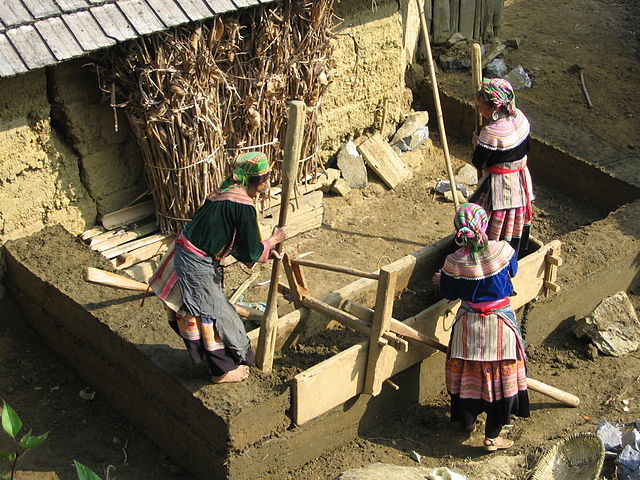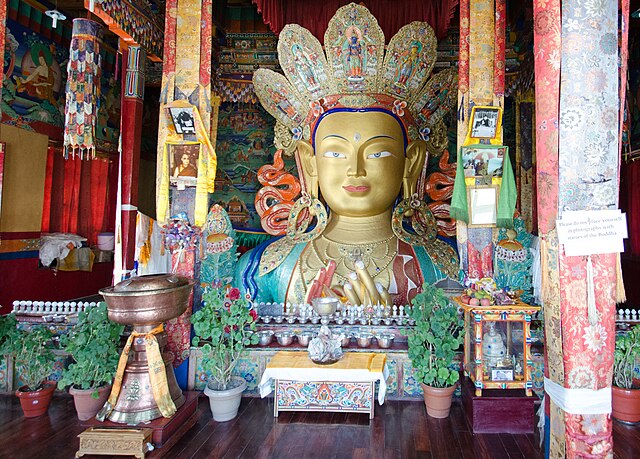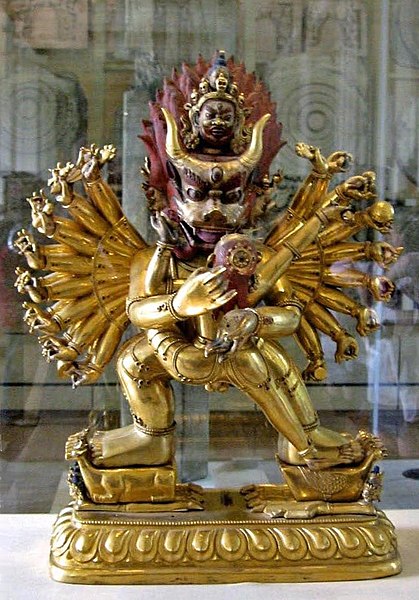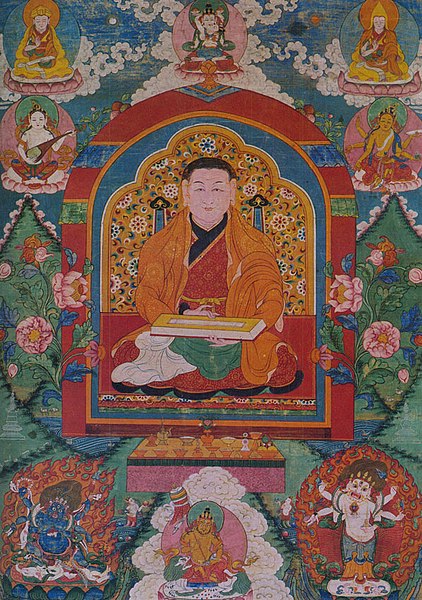Rammed earth is a technique for constructing foundations, floors, and walls using compacted natural raw materials such as earth, chalk, lime, or gravel. It is an ancient method that has been revived recently as a sustainable building method.
The ruins of a Han dynasty (202 BCE – 220 CE) Chinese watchtower made of rammed earth in Dunhuang, Province of Gansu, China, at the eastern end of the Silk Road.
Traditional model of construction of a wall of rammed earth on a foundation
A typical Hmong house-building technique in the subtropical climate of Vietnam.
Old rammed-earth wall with deterioration, in France
The vast majority of surviving Tibetan art created before the mid-20th century is religious, with the main forms being thangka, paintings on cloth, mostly in a technique described as gouache or distemper, Tibetan Buddhist wall paintings, and small statues in bronze, or large ones in clay, stucco or wood. They were commissioned by religious establishments or by pious individuals for use within the practice of Tibetan Buddhism and were manufactured in large workshops by monks and lay artists, who are mostly unknown. Various types of religious objects, such as the phurba or ritual dagger, are finely made and lavishly decorated. Secular objects, in particular jewellery and textiles, were also made, with Chinese influences strong in the latter.
Large shrine statue of Maitreya, Thiksey Monastery, Ladakh, 1970
Thanka of Ashtamahabhaya Tara, late 12th century, gouache on cotton.
Yab-yum "bronze" with pigments and gilding
Self-portrait by the leading Mongolian monk Zanabazar (1635–1715)








